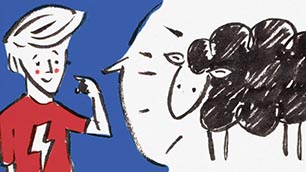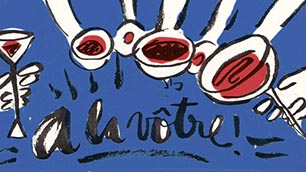IMPARFAIT : FORMATION
We already know how to form the passé composé, which is the most commonly used tense to refer to past actions. Today, we introduce another past tense: the imparfait. The imparfait (imperfect tense in English) is a descriptive past tense indicating an ongoing state of being or a habitual action in the past. In English, it is often translated as “was” or “was vb+ing”. Because the imparfait is used to describe what is ongoing in the past, the following adverbs are commonly associated with it :
| tous les jours | every day | chaque jour | each day |
| tous les matins | every morning | chaque matin | each morning |
| tous les mois | every month | chaque mois | each month |
| tous les ans | every year | chaque année | each year |





























